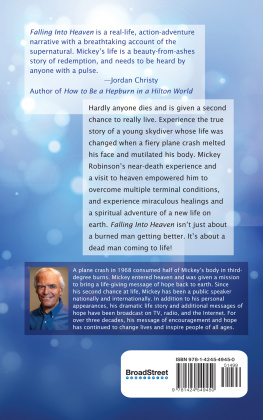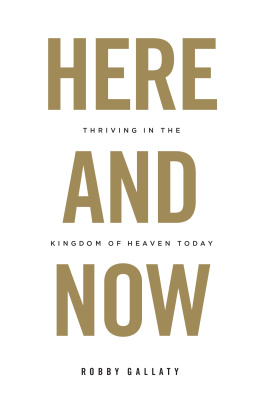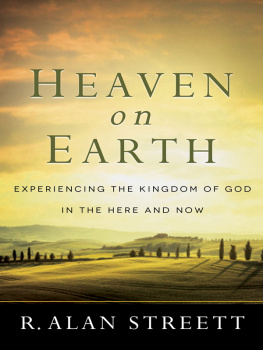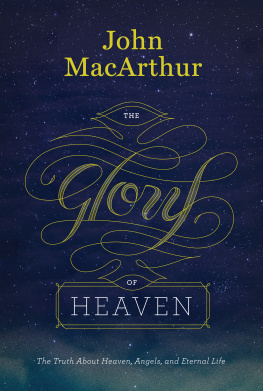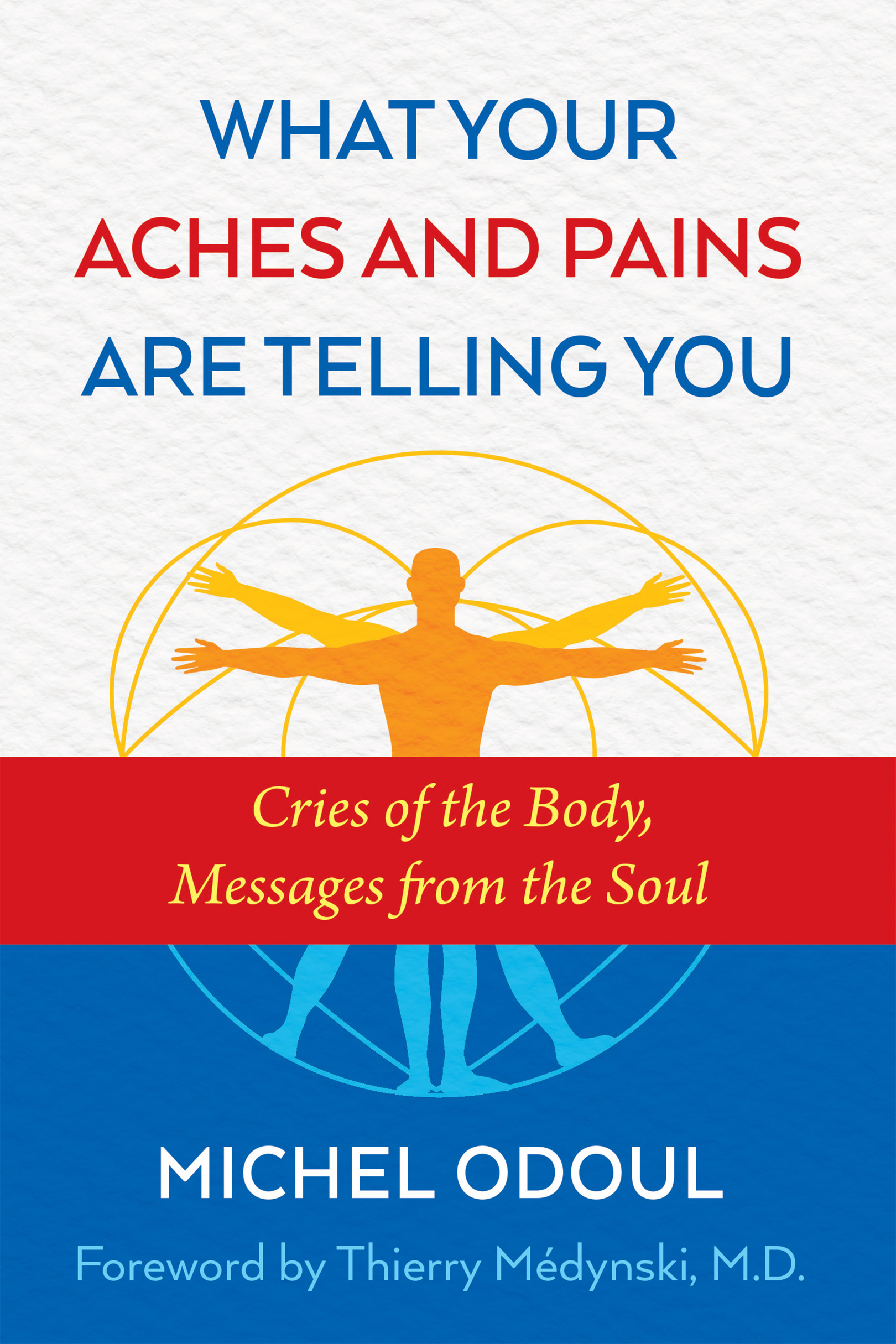
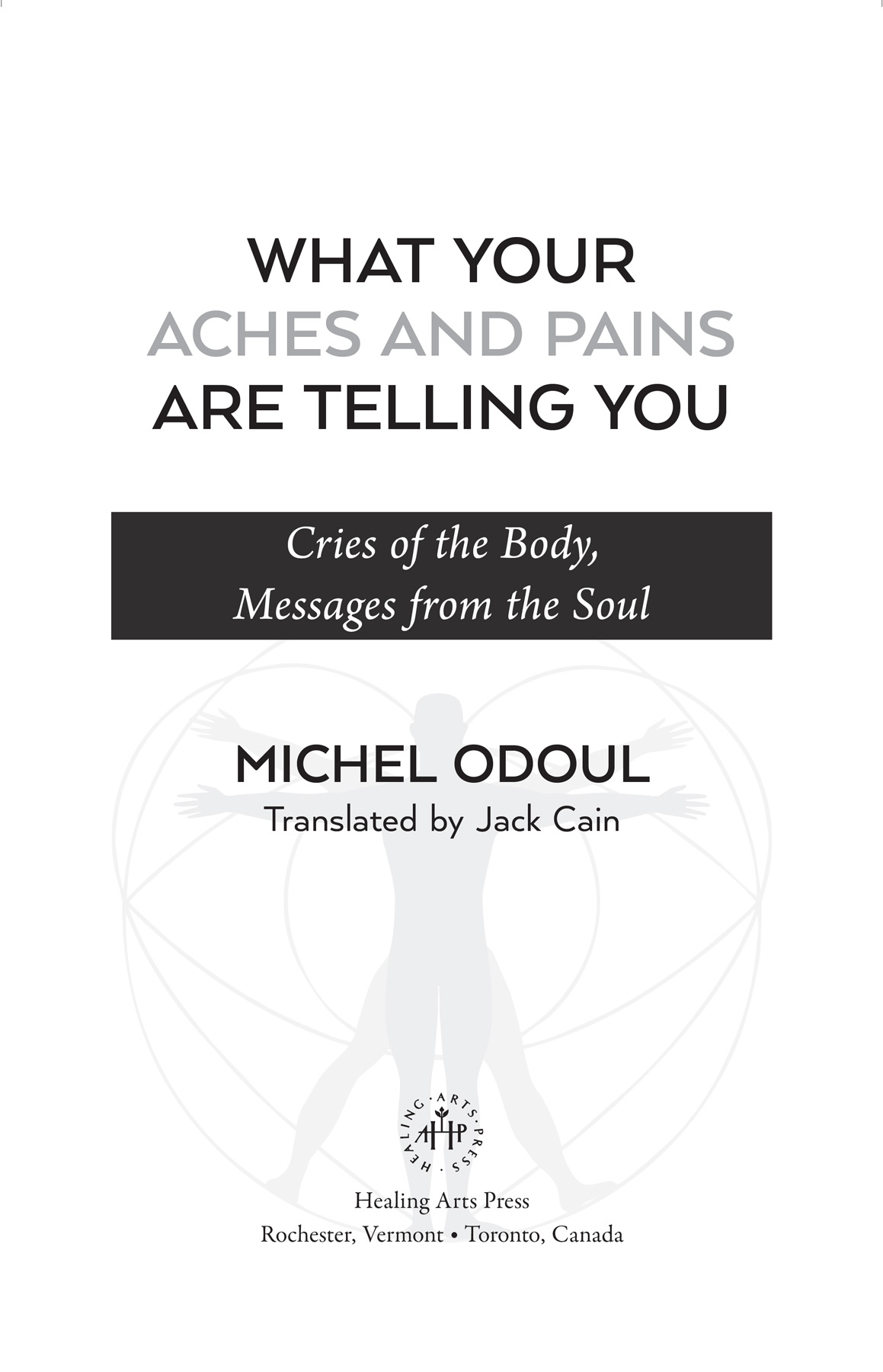
WHAT YOUR
ACHES AND PAINS
ARE TELLING YOU

A much-needed book for the 21st century; Odoul takes an energetic approach to holistic philosophy and goes to the root of energetic disturbances that lead to ailments or chronic conditions. Odoul connects us to the profound unconscious components of our minds and bodies to reconstruct physical ailments and thus develop transparency throughout our physical and our spiritual lives.
SEBHIA MARIE DIBRA, COAUTHOR OF OVERCOMING ACUTE AND CHRONIC PAIN: KEYS TO TREATMENT BASED ON YOUR EMOTIONAL TYPE
In What Your Aches and Pains Are Telling You, Odoul demonstrates how pain tells your mind what is happening in your body, not only where, but why. He shows the reader how understanding your pain can provide pathways to healing.
MARC S. MICOZZI, M.D., PH.D., COAUTHOR OFOVERCOMING ACUTE AND CHRONIC PAIN: KEYS TO TREATMENT BASED ON YOUR EMOTIONAL TYPE
No man can reveal to you anything other than that which already lies half asleep in the dawning of your knowledge.
KAHLIL GIBRAN

To the inner master who knows so well how to inspire us when we let life live and breathe within us
Foreword
The premise of Western medicine is that a given genetic foundation predisposes you to specific illnesses. The predisposition can be congenital In Eastern traditions, however, illness always indicates an obstacle in the accomplishment of ones Life Path. This is how the nonconscious, using energetic disturbances that can eventually lead to illness, speaks to us about what is hindering our full spiritual development and evolution. These two approaches are not necessarily incompatible (especially when we know, for example, that under stress mice can develop chromosome mutation). Thats why, even when given exactly the same genetics, one person can develop an illness and the other remains in good health.
Instead of venturing into complex and hazardous genetic manipulation, it seems simplermore reasonable and less costlyto restore health by understanding the psychoenergetic mechanisms that underlie illness. That is why Michel Odouls book is a practical manual for anyone wanting to discover the keys to deciphering the bodys language. In reading it, perhaps we may learn to no longer see illness as something caused by chance or fate or some external source outside of oneself, but instead to see it as a message from the nonconscious, from ones inner being, what Michel Odoul calls the inner master. By taking this approach we will discover how behind our aches and pains lies a creative illness in the sense of pointing to a means of moving forward in ones spiritual evolution.
By simply and clearly revealing the psychoenergetic mechanisms that govern the organization of the macrocosm and the microcosm according to the Taoist approach, the author leads us toward discovering the deeper meaning of our aches, pains, and illnesses based on where the symptom is located in the body. For a long time this has been a vast area of inquiry for me, one that is rarely investigated or is muddied by contradictory conclusions. This book clarifies my own perceptions about the underlying causes of illness while providing an invaluable guide that can be used in any medical setting. These perceptions are given even more validation in that they are in harmony with Western psychological traditions, as has been shown by French psychotherapist Annick de Souzenelle, for example.
Odouls approach, however, is based on two necessary and related conditions: that we take full responsibility for our own state of health and well-being, and that we give up the popular image of the all-powerful doctor as some sort of a savior. These conditions are the price for gaining a fully meaningful life.
This book can be quite useful to medical doctors and other practitioners who want to expand their awareness of illness beyond the simple mechanistic approach in order to assist each patient in understanding and realizing his or her own path. As the major objective of the twenty-first century resides in the reconciliation of opposites, perhaps we can envision a day when allopathic medicine, homeopathy, acupuncture, body-mind approaches, and the various forms of Eastern medicine (or at least the philosophical principles underpinning them) might coexist harmoniously.
THIERRY MDYNSKI, M.D.
Dr. Mdynski, a medical doctor with specialties in homeopathy and psychology, is coauthor of the book Psychanalyse et ordre mondial (Psychoanalysis and World Order, published by Montorgueil). He currently works at an oncology facility in the south of France.
Note to the Reader
All the case studies in this book refer to real people; however, to maintain their privacy they are identified only by first names that are not their real names. Any resemblance to someone having that name and experiencing the same condition is a sign no doubt that what is written in this book is accurate, but in no case does it refer to that particular person.
Introduction
We are living in times in which the tools of communication have never been as powerful, what with cell phones, laptops, and tablets that allow us to write, text, or speak to anyone in the world at any moment through the all-pervasive internet. However, this picture is not quite so rosy as it seems. Our communication is too often empty, vague, or misleading, only pretending to be real communication. All our gadgets are frequently only devices we use to compensate for our inability to have real, meaningful exchanges with others.
The way we conduct our lives, what with the pervasiveness and power of the media, the trap of materialism, and the accelerated pace of daily life, has gradually led us to believe that merely existing is living, that agitation and frenzy is energy. This has happened with our implicit consent. In fact, we even ask for italways more, always faster; thats how we feel. But to what end? Is it to wake up one day at whatever age, sick and depressed, only to realize that we have missed out on life?
We have been conditioned by modern society to try to satisfy our desires through external means, so we have learned how to manage, master, control, and communicate with what is outside of us. Every day this rat race takes us further from our true, authentic self, eating away at our essence. It is only death or illness that seems to bring us back, forces us back, to face ourself. And when this happens, as it inevitably does, we feel helpless. Who is this unfamiliar person we sadly discover in the mirror? What does it mean that this body hurts? Who is this almost total stranger languishing in bed? And yet this stranger is our first and only true self, the one weve never really spoken to or taken the time to get to know. Discovering this unfamiliar self can be so disturbing that well ask the doctor to give us whatever it takes to silence the suffering that we reject. And yet, if we only knew! The issues that underlie pain and suffering are nothing more than desperate cries for recognition that our life and our body are sending us. They are warning signs, indications that we are out of balance with our true nature, but all too often we are unable to hear these warnings, much less understand them.
Next page


